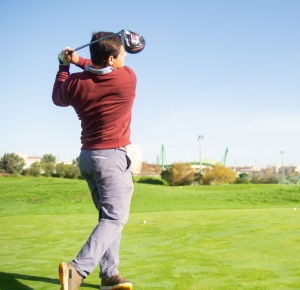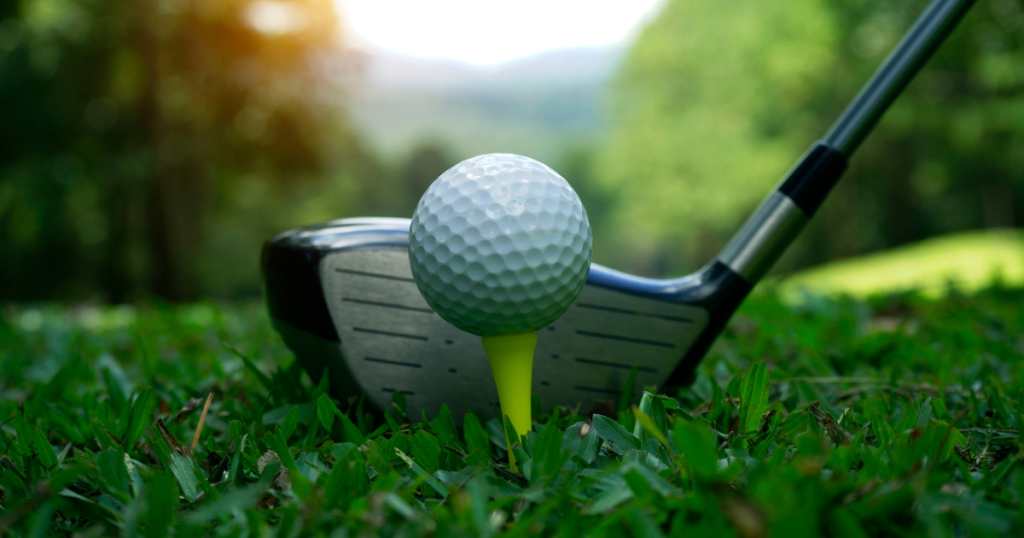Iron Out Your Game: Prevent Common Golf Injuries
 Golf is everywhere. What has always been a popular sport has recently exploded. With more ways to play, like entertainment-based facilities such as TopGolf, golf has reached a new demographic of players.
Golf is everywhere. What has always been a popular sport has recently exploded. With more ways to play, like entertainment-based facilities such as TopGolf, golf has reached a new demographic of players.
With the expanded growth of the sport comes the rise in golf-related injuries. New or amateur golfers with poor body mechanics and errors in technique are at a higher risk for injury.
At Orthopaedic Hospital of Wisconsin, we want to ensure you have the information to put your best foot forward in any sport or physical activity.
In the blog post below, OHOW physical therapist and Titleist Performance Institute Certified practitioner Matt Mestelle, PT, MPT, of Wauwatosa Physical Therapy, describes the most common golf injuries and how to prevent them. Following his advice, you can help to eliminate any issues and swing without pain.
Fore-ward Momentum: Golf’s Growing Popularity
Golf has seen four straight years of 3 million new on-course beginners and more new course openings since 2010. The highest level in participation is among young adults aged 18-34, with 37% being female.
The growth in popularity and new ways to play can go hand in hand. Entertainment-based facilities, such as TopGolf, and an ever-expanding availability of indoor golf simulators have brought the game of golf to entirely new market segments. Players of all ages and abilities can now play year-round, regardless of climate.
2023 also marked the fourth straight year of more than 500 million rounds of golf played by 26.6 million Americans. Adding the “off-course” players, this total ballooned to 45 million golfers, representing 11% of the US population.
 Avoid the Rough: Common Golf Injuries
Avoid the Rough: Common Golf Injuries
Unfortunately, avid golfers experience a high incidence of injury and can develop painful conditions over time. Research shows that up to 50 percent of players will develop chronic musculoskeletal conditions. Not surprisingly, this incidence increases with age.
Trends also tell us that among new or amateur golfers, injury is related to poor body mechanics and errors in technique. Conversely, those who play frequently and touring professionals tend to sustain overuse injuries due to the repetitive nature of the sport.
Most common causes of golf injury:
- Poor body/swing mechanics
- Excessive practice or overuse
- Lack of customized exercise routine
- Poor fitness, nutrition, and sleep habits
- Improperly fitting equipment
The Most Common Sites of Golf Injuries
Lower back pain is, by far, the most common complaint from the injured golfer. After lower back injuries, golfers typically suffer most from problems with their shoulders and knees. Both can be related to the high degree of rotation and rapid movements involved with hitting a golf ball repeatedly.
The most common sites of golf-related injury include:
1. Lower back
A survey of amateur and professional golfers has reported as many as 25-30% of players will report lower back pain after a round. Injuries range from common sprains and strains to severe disc problems and pinched nerves. Interestingly, the lower back is generally not the cause of the problem with these players but merely the source of the symptoms.
Often, the blame is on tightness in the hips or upper back of a golfer suffering from lower back pain. When these areas do not move as they should, there is excessive stress on the lower back during the rotational motion of the golf swing.
You may not have guessed that lower body-mass index individuals (think tall, slender players) have a higher incidence of lower back problems.
Frequent culprits that are likely to contribute to a golfer experiencing lower back pain can include:
- Tightness in the upper back and/or hips
- Poor use of the core or abdominal muscles
- Improperly fitting clubs
- Body-mass index
2. Shoulders
Rotator cuff injuries occur frequently in golf for several reasons. A lack of rotation in the shoulder joint can put excess stress on the rotator cuff during the backswing. Additionally, the sudden impact of hitting the ball or ground with the club can injure the rotator cuff muscles.
3. Knees
Like lower back issues, knee structures become injured due to poor mobility above or below the joint. Tight hips or ankles cause excessive rotation through the knee while swinging a golf club. Very commonly, injuries to the meniscus (shock-absorbing cartilage inside the knee joint) on the back leg occur by this mechanism.
In addition to the physical limitations, set-up positioning and how you grip the golf club can substantially impact the repetitive stress on your joints.
Golf Injury Prevention and Management Tips
The good news is that there are many options to prevent the drag of being too hurt to play. The golf fitness and rehabilitation industry has made great strides in recent decades.

- Find a professional in your area who can evaluate your movement capabilities relative to the requirements for golf. Work with this individual to address any deficits to reduce your risk for injury and improve your odds of playing great golf.
- Search for medical and fitness professionals: https://www.mytpi.com/experts
- Work with a golf professional to optimize your golf swing to match your physical capabilities.
- Search for golf professionals: https://www.mytpi.com/experts
- Use common sense practice habits. You do not need to hit 200 practice balls in a session. Depending on your skill level, you will only hit 30-60 full-strength shots during an 18-hole round of golf. You do not need that extra-large bucket!
- Address general fitness, nutrition, and sleep habits. Avoid sleeping on your stomach – it creates many problems for the most injured areas discussed above.
- Find a local club fitter or club fitting event to ensure your clubs fit you and your golf swing properly. Equipment manufacturers such as Titleist, TaylorMade, and Callaway will offer these events. Major distributors like Golf Galaxy and PGA TOUR Superstore will perform club fittings year-round.
Don’t let injuries rough you up—by following this advice, you can stay in the green. Should you experience a golf-related injury or if you experience pain that keeps you from playing, don’t hesitate to reach out to our team of orthopedic specialists. Their expert care can get you back to playing your best game.

